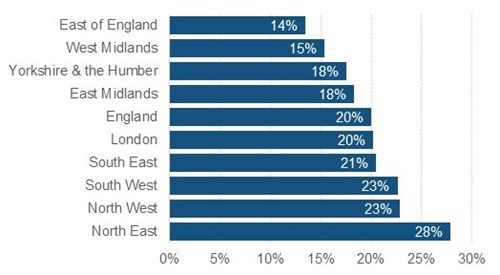School funding: Why we must not lose focus on addressing disadvantage
Thursday 1 June 2017
Earlier this week, the NFER blog focused on the urgent issue of school funding. But while the politicians argue, is there more that can be done at a school level?
Given the unpopularity of ‘earmarked’ funding, and the pressure to cut government spending, it is interesting to note that the main political parties are committed to continue funding the pupil premium. The Conservatives and the Liberal Democrats make an explicit commitment to keeping the pupil premium, and the Labour manifesto promises to ‘invest in measures to close the attainment gap between children from different backgrounds’.
The pupil premium has been largely welcomed by schools, and the rise in funding (from £430 per pupil in 2011–12, to £1,320 per primary pupil and £935 per secondary pupil in 2016-17), means that the funding currently amounts to a substantial £2.4 billion in England. To put it in context, this represents approximately six per cent of the total revenue funding for schools.
The pupil premium is important because it recognises the difference between pupils due to disadvantage. Given that England has a deep-seated social divide, pupils from disadvantaged backgrounds need all the help they can get. By the age of three, children from poorer backgrounds are almost a year behind their better-off peers. Unfortunately, this gap does not narrow as children progress through school, leading to very poor social mobility. The pupil premium is one of the main policies designed to address this inequality.
In 2016, the attainment gap between pupils from disadvantaged backgrounds and others reduced slightly, as it has in four of the last five years. But progress is slow and the position of disadvantaged pupils in 2016 is almost the same as in 2013. In fact, the gap would have been the same as last year if you exclude the recent addition of results from students in Further Education colleges.
So, why continue to fund the pupil premium despite the slow progress so far? Apart from its popularity with schools, politicians have recognised that this investment will take time to show results. The recent report from the National Audit Office recommended that the government should continue funding the pupil premium but should do more to encourage schools to use the most cost-effective interventions.
Our research suggested that there is no simple strategy or set of strategies that are associated with success. The schools where pupils from disadvantaged backgrounds had made the greatest progress were using a range of approaches, suited to their context and the particular needs of their pupils. More positively, there were some common principles of best practice, such as improving the quality of teaching, treating pupils as individuals and closely monitoring progress. Schools had typically moved through a series of stages, refining their approaches over a period of years. In terms of specific strategies, the research found that more successful schools were more likely to be teaching metacognitive skills and using peer-to-peer learning, both of which have been identified as effective by the EEF teaching and learning toolkit.
Yet our recent Teacher Voice survey found that 20 per cent of teachers report that they are using the pupil premium to plug gaps in their school’s budget. The extent to which teachers report this is happening varies a lot by region, from 14 per cent in the East of England to twice the share in the North East (at 28 per cent).
Schools who are using pupil premium funding to plug gaps elsewhere in their school’s budget

Source: Teacher Voice Survey question by Sutton Trust
In a time when schools are being asked to redouble their efforts for disadvantaged pupils, there is no doubt that most schools are willing to do so. But the concern is that increasingly tight school budgets may dominate the agenda and hold back much-needed progress in helping children from disadvantaged backgrounds to realise their potential.
You can follow all of NFER’s General Election 2017 commentary using the hashtag #GE17nfer on Twitter.

